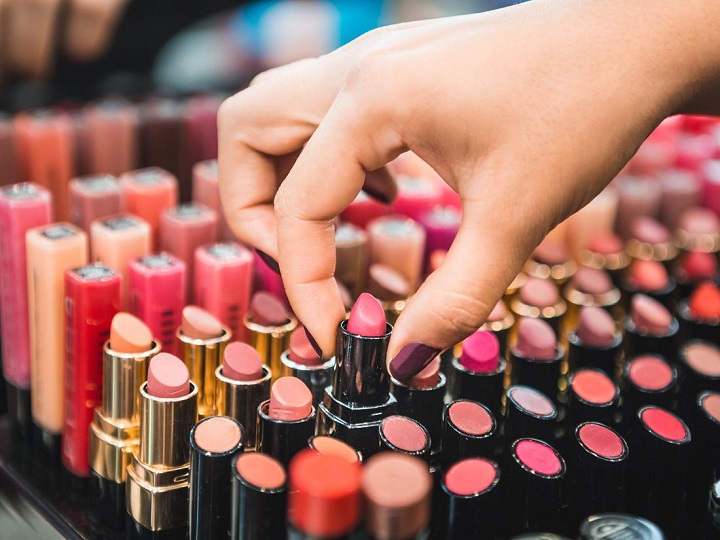Date Submitted 22/09/2020
According to the appendix No. 06-MP, issued together with Circular 06/2011 / TT-BYT of the Ministry of Health regulating the management of cosmetics, there are 3 heavy metals restricted to cosmetics: lead, mercury, arsenic.
Accordingly, the limits of these substances in Vietnam (as well as in the ASEAN region) are as follows:
1. Mercury: The maximum permissible concentration in cosmetics is one part per million (1ppm)
2. Asen: The maximum permissible concentration in cosmetics is five part per million (5ppm)
3. Lead: The maximum permissible concentration in cosmetics is twenty part per million (20ppm)

The limits of the above metals are very low (in percentages, the maximum concentrations of mercury, arsenic and lead are 0.000001%, 0.000005%, and 0.00002% respectively). This concentration does not mean that these substances are components, but are considered as impurities. The manufacturer does not intentionally put these heavy metals in cosmetics, but for some reason cosmetics can still be contaminated with these heavy metals, usually the input materials may contain impurities, or lips. production field contains impurities. In the chemical manufacturing and processing of natural ingredients it is not uncommon for a substance to have a purity of up to 99.99% (for example, the current best quality gold is also 99.99 gold. % - "four ripe" gold, not 100% gold).
Why is mercury, lead and arsenic banned in cosmetics?
All three of these heavy metals affect people's lives, causing the body to be contaminated with heavy metals and possibly leading to death.
- Arsenic is arsenic, is a poisonous substance (in Chinese swordplay movies, people poison each other with this substance). 0.12 grams of arsenic can be lethal. According to the American Academy of Sciences, arsenic residues of 50 parts per billion in drinking water - ie concentrations allowed by the US and Europe - also pose a cancer risk of 15 per 1,000 people used. Arsenic causes such phenomena as dry mouth, abdominal pain, nausea, and diarrhea. Causes diseases such as nephritis, hemolysis, skin pigmentation disorders, tongue mucosa or keratosis, darkening and depigmentation, Bowen's disease. Even capable of causing genetic mutations, cancer, anemia, cardiovascular diseases, diabetes, liver disease.

Lead was once used in cosmetics, in ancient times the Egyptian queens used it to make eyeliner pencils, and lead is still used until later. In the 18th century, in Europe, there were many cases of lead poisoning from makeup, with symptoms of swelling and inflammation of the eyes, damaged tooth enamel, black skin, and death. Lead is a heavy metal. If lead is absorbed, it will directly affect the central nervous system, kidneys, marrow, ... If absorbed in a small amount, there are symptoms of abdominal pain, joint pain, increased blood pressure. If the level is high, it can lead to the risk of complications, even death.
Mercury was once used in healing and was believed to prolong life. However, now modern science has known that lead in the form of vapor or mercury compounds and salts are toxic and easily absorbed through the skin. The toxicity of dimethyl mercury, for example, is that just a few microliters fall into the skin and can be fatal.

We are not currently classifying these toxins as organic or inorganic. Although inorganic arsenic is toxic and organic arsenic is not, or inorganic mercury is less toxic than organic mercury, at present, the heavy metal limit in cosmetics according to the Ministry of Health and ASEAN includes all organic and inorganic substances of lead, mercury and arsenic.
The limits of the above metals are very low (converted to the percentage, arsenic and lead have the maximum concentration of 0.000005%, and 0.00002% respectively), this concentration is not significant. This substance is a component, which is only considered as impurity. The manufacturer does not intentionally put these heavy metals in cosmetics, but for some reason cosmetics can still be contaminated with these heavy metals, usually the input materials may contain impurities, or lips. production field contains impurities. In the chemical manufacturing and processing of natural ingredients, it is normal for a substance to have a purity of only 99.99%. Lead in lipstick helps to make the lipstick long-lasting, durable. Lead is present in powder colorants, especially the red color. In addition, lead also appears as an impurity of lipstick components such as paraffin oil, vaseline, zinc oxide, titanium dioxide, ... In fact, lipsticks contain lead, especially lipsticks that contain substances. beautiful, smooth, durable lipstick. However, lead in lipstick acts as a trace element, and in low dosage (several parts per million). Even so, if the lead content exceeds the lead content in lipstick, it will harm the health of the user.
The process of testing lead, mercury and arsenic in cosmetics is done at drug and cosmetic testing institutes in provinces and cities nationwide. This is a complicated and dangerous process because these metals are highly toxic.